"Armored cars" in the trend
That's all the debate around "tank Mendeleev ”from the same opera, and the reasons for all kinds of disagreements are that many are very superficially familiar with this design. But if you think about it, it will become obvious that everything in this car was redundant. And weight, and armor, and weapons! “The author even provided for the transfer of the tank by rail!” - Someone admires the prudence of the designer, but if, again, to think with his head, it will become clear that he really did not provide for anything.
And how to put it on the tracks again from railway skating rinks? In the case of the German “Tiger”, only for the sake of driving on the cargo platform and moving out of it, providing for “transport” tracks, and the outer row of wheels before that was removed. And then the tank was driving, moving down, “changing shoes” (each caterpillar on 2,5 tons!) And going into battle. I couldn’t fit onto the pontoon, change shoes again, and so on ... And how would all the same be done on an 180-ton car? Who would his 120-mm gun shoot on the battlefield? And how would this monster force German anti-tank ditches? After all, it is known that the French “Saint-Chamons” very often simply stopped in front of wide German moats, because they couldn’t get over them because of their “noses”. And the "Mendeleev tank" had no nose at all. The British put huge fascines on their tanks and dumped them into these moats. But here the fascine is nowhere to be “stuck”. So yes, there is priority: priority on a fantastic and completely unworkable and unrealizable project!
However, I think to please all those who are more pleased with the mistakes of Western engineers, that even there everything was basically the same. That is, as in any society, people (and engineers too) were divided into smart, mediocre and stupid. And the projects of the tanks came from all three of these categories.
For example, in March, 1915, engineer P.Frot, who worked at the Northern Canal Company, proposed building a symmetrical wheeled “battle car” - a “push-pull” 10 tone with two control posts, so that she could drive along the battlefield ahead back without turning. Engine power of all 20 HP He placed in the center of the case. The crew of 9 people, included four shooters from machine guns and three assistants. The speed of the machine, according to his calculations, should have been 3-5km / h, but even the model was not built, as it was obvious to everyone: it simply would not go to the ground dug up with shells.
Another car, very similar in design to this "car" and the "Mendeleev tank," was proposed by Canadian engineer Stephen Kupchak. He placed the armored anti-bullet armor box-shaped case on the chassis of the Holt tractor, and placed one 75-mm gun in the front. Isn't that the same "Mendeleev tank", and much more realistic conceived!
But he handed over his project to the British War Department at the end of 1918 of the year, so he was told that, say, build a full-size car for demonstration, and at his own expense, and then we will look at it! It is clear that for the designer it turned out to be an impossible task and he did not offer such projects anymore. The four-track (and very heavy tank weighing about 100 t) was also embodied in the metal under the name “Flying Elephant”, also very similar to the “car on caterpillars”. He, too, would have to have a counter-booking, but the British were scared off by the heavy weight, transportation problems and ... weak weapons - just one 57-mm cannon and 4-6 Lewis machine guns. As a result, only the model in the tank museum in Bovington remained from him. A "Mendeleev tank" was supposed to weigh about 170 t ...
Interestingly, the Americans, along with the fact that the British and French tanks used in Europe, also tried to create something of their own, but they did not succeed in doing anything worthwhile! In 1917, they started with the fact that they also made their own “car on the tracks” - put an armored box on the chassis of the Holt tractor
"Holt gasoline-electric" had a drive used on the French tank "Saint-Chamon". First gasoline engine cooling water power 90 hp rotated the generator, which fed the current two electric motors, each working on its own track. It was convenient to control them: it was enough to change the voltage applied to the electric motor, as it began to rotate faster or slower and, accordingly, the same thing happened with the tracks. It was possible to enter the tank through a large door (one of the advantages of the carriage layout). But he was not accepted for service because it seemed to the military that he had little speed and that it would be bad to overcome the ditches and craters from the shells on the battlefield. Armament 75 mm howitzer mountain two machine guns also did not impress them.
That is, we can say that the tank cars were “in trend,” that this idea was “in the air”, and engineers from different countries, by virtue of their mental potential and creativity, tried to realize this trend in the metal. At the same time, the feature of this trend was megalomania, and the Americans also had it. For example, it was in the United States that a machine project was created under the name “Trench Destroyer” weighing 200 tons, i.e. it would be even heavier than the German super-heavy tank "Colossal"!
In terms of its design, it was again an “armored car” on the undercarriage of the same Holt tractor, but appropriately elongated. The weapon of the “destroyer” was to consist of 6 (!) 75-mm French guns arr. 1897 of the year, flamethrower and another 20 machine gun "Browning" with a roundabout. The crew of the "monster" was planned in 30 people, i.e. again, more than the Colossal tank with its 22-27 crew, and 4 77-mm guns. However, if the Germans did build at least one such machine, and for the other, they prepared almost a complete set of parts, although without engines, then the Americans did not build the “destroyer”, thereby saving themselves from having to disassemble it later. There was also developed a project called "150-ton field monitor". The tank was steam, on four huge wheels with a diameter of 6 meters! The front wheels were steering, the two rear could not turn.
The armament of the “monitor” consisted of two 152-mm naval guns, which were usually armed with cruisers and 10 batteries of Colt machineguns of the 1895 model of the year, of which four were located in two towers, and the other six were to shoot through the loopholes in the hull.
The crew of the car had to consist of a 20 man, i.e. was even more than the famous German tank A7V. At the same time, the thickness of his armor was relatively small - only 6-18 mm, so she could not withstand hitting the shells of the German 77-mm field gun, and therefore there was no point in it! The weight was too big - 150 tons. Therefore, it is not surprising that this development has not left the drawing board.
By the way, in April, the 1917 of the year was already our compatriot mechanical engineer S. Navrotsky proposed another tank weighing 192 tons. The dimensions were assumed to be corresponding, but the armament was especially impressive: two 203-mm howitzers, two 152-mm guns, four 102-mm and eight 7,62-mm machine guns. The armor of the car was supposed to be 20-30 mm, the crew was 60 people. And so, what do you think, what did our military think about when they received this “project”?
At the end of 1916, Second Lieutenant Drizhenko, who worked at the Admiralty Plant in Petrograd, offered “a self-propelled armored turret for an 8-inch howitzer” as another analogue of the “Mendeleev tank”. It was the same armored car on a tracked chassis and with weapons in the front. Two petrol engines for 180 HP each worked for each of its tracks. On the roof were two machine-gun turrets. Since the length of the supporting surface of the undercarriage was large (6 m), she had to make the two extreme wheeled carts of the caterpillars rising, which, according to the author, would improve the turning ability of his car. Inside was provided with electric lighting and ventilation. The estimated weight of the "tower" was 46 tons. Armor - 10 mm. The crew is six people, and the speed of planning is at the level of 10-15 km / h.
The project got into the Main Artillery Directorate, where its “tower” was compared with the allied tanks. As a result, the author was told that her armament for the tank is clearly redundant, and for heavy artillery, tractor thrust is also sufficient.
A whole series of completely delusional projects came in those years from Ukraine as well, so that the “fun-figures from the mind” did not appear there yesterday. So, in April, 1916-th resident of Lugansk, S. I. Shevchenko wrote to the State Agrarian University, that he “invented a method by which he could withstand enemy strikes with the greatest success. It is necessary to weave a reservation from the choice of twine. ” To do this, he offered to weave a fabric of twisted rope with a diameter of about one inch, and then “thicken so strongly that a fossil would turn out. The thickness of this armor must be at least 28 inches ... Then you will get a wall-fortress, and you can put it anywhere. ” The basis for it was to serve steel with a thickness of at least 4 inches, so that his fellow countrymen can be proud: after all, he essentially offered nothing more than "combined armor." That's just the weight of the "armor" and the thickness, he clearly did not think through. The technical committee responded to the unfortunate inventor that the military department does not meet the need for its invention.
16 May 1915, the GVTU also received the “Project for a car before breaking trenches and military forts”. Its author, a resident of Lviv, I.F. Semchishin, decided not to waste time on trifles, but wrote directly to Nicholas II, and in his dialect of the Russian language: “Whenever we had some large, armored, inside a reversible barrel or roller, which would turn in the marked namas straightforward, - we could ride them over the enemies. This is what my project understands before destroying fortified areas and constituting a mobile fortress, which I will call the machine “Oboy” here. It was about an armored ellipsoid of cyclopean sizes (approximately 605 m high and 960 m wide - where, science fiction writers with novels about the distant future, where people live in such tanks here and face them head-on!), With cruising speed 300 versts per hour. The Technical Committee expectedly considered the Semchishin project unfeasible, and “Oboy” remained on paper as the project of the largest in stories armored car.
It is interesting that in the trend of the new Ukrainian history I personally see a monument to this outstanding “inventor”, on which he, cast in bronze, and with his egg-shaped “both”, stretches it to people!
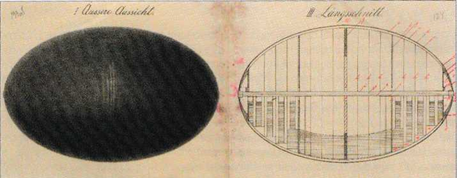
"The machine for the destruction of the fortresses" Oboy "I.F. Semchishina "
The appeals to the GVTU were replete with ideas for the improvement of armored vehicles, the benefit of which the Niva magazine and newspapers constantly reported about their “youthful forays against the enemy.” For example, 11 August 1915 received a letter from the not very competent farmer of Minusinsk district of the Yenisei province RI Shovkoplyas: “I realized that you can arrange a machine like the shuttle of an old type sewing machine ... attach to the back of the bullet to do the wheels under it provide shells and let the action ". The presentation of his plan Shovkoplyas added a picture of the “Pullekhod”, to which he managed to put the blot, but from which it is simply impossible to clarify the structure of the intended machine. Well, it is clear that it would not have been possible for her to let her into the "u action"!
2 November 1915, a sketch of an armored car, sent to Russia from the belligerent on the side of the enemy Bulgaria, signed “Grateful Elders”, who offered BA to 36 infantry personnel with two machine guns and two mountain-type guns. In fact, the Bulgarians offered a huge BTR, which even after 100 years did not learn to build!
A year later, another project came from Ukraine (although it wasn’t Ukraine at the time) from P. Marchenko from Odessa, who offered an armored cruiser similar to a tram car, which “has no backside either”! The peculiarity of the design was the independence of its departments from each other, up to the possibility of assembling one “healthy” one capable of fighting at the front of two damaged vehicles. The armament of the cruiser-car should have been made up of six naval 75-mm cannons (!), Four machine guns and two anti-aircraft guns located in the rotary turret - the American "trench destroyer" is resting, isn't it?
For more than two years, from January 1915 to March 1917, the Ingal engineer was offered to the Engineering Committee for consideration for even more formidable fighting machine, and he obviously didn’t hold on to persistence, but this knowledge was not enough. Ingal's armored vehicle had about five arshins in height, 12 feet in width and 15 arshins in length, and had 8-9 mm armor and was two-storeyed. On the top floor there was weapons (12 guns, machine guns or something else), and below the engine and transmission - a kind of "tudor carriage" at the new stage of the historical development of military technical thought. The crew size was calculated in 30 people, and weight in 50 tons. To break through the enemy's field positions, as on the Preto machine, rotating knives were provided for cutting the wire and a chain saw horizontally positioned in front destroying the stakes of the wire obstacles. There is a clear resemblance to James Cowan 1855 steam engine of the year, isn't it? The chassis of the car Ingal consisted of five pairs of wheels, while only two front axles were planned to be connected with the steering. The officers of the Engineering Committee rightly pointed out a number of weaknesses in the project: the huge mass and large dimensions would not allow this machine to cross any existing bridge. On soft ground, its permeability would be extremely limited. A poor visibility for the driver and a high silhouette of the car - all this together would make it easy prey for the enemy artillery.
Other inventors saw the key to success in increasing the patency of their combat vehicles. Here, the most original project can be considered the proposal of the subject of the British Empire G. Layellya. At the end of March 1916, he addressed the Russian ambassador in London to Count A. Benckendorff “A description of the improved combined motor carriage: car-sled-boat-hydroplane” - well, just something like the Jules-Vernovsky “Lord of the World” machine. Lyell offered to put on his car a few propellers and runners, which could, if necessary, be replaced by floats. According to the author, his brainchild could move on any surface without losing speed. Minimal armament (machine gun) was compensated by mobility and freedom of maneuver even on rough terrain. The inventor admitted that his project was submitted to English military engineers back in 1914, and rejected by them. But he didn’t inspire Russian specialists either.
Another persistent search designer A.I. Kudryavtsev, whose proposal bypassed many instances, including the office of the Moscow governor and the Police Department, in 1916, offered an armored, cigar-shaped vehicle so that the bullets ricocheted from it. Armament: machine guns on the bow and stern, as well as anti-aircraft gun in a dome-shaped tower in the center of the hull. But the most paradoxical of the projects of armored vehicles should recognize the “ball-scooter” from Kiev G. Opanasenko. An anonymous report about him, signed by “Russian Man”, was received in the autumn of 1917 of the year to the headquarters of the 1 Army. The note said: “This scooter can, under any fire, go quietly to the goal. This is a high-speed, heavy land-based armadillo, it can serve as a destroyer of obstacles, in a small form a self-moving core, etc., etc. The speed of the 700 scooter at [hour] is stable and very convenient. ” Seven hundred!!! That is 746 km / h! To date, this is the earliest of the projects of armored vehicles of spherical shape, but unfortunately not the last.
Revolutionary upheavals and the beginning of the Civil War stopped the military-technical "revolution from below." 23 February 1918 was eliminated and GVTU, and all these projects remained specimens of the fantasy psyche and technical illiteracy of its creators. But it’s a pity that they didn’t collect them all at one time and didn’t publish them to the beginner military inventors so that they would not repeat the mistakes of their odious predecessors! By the way, it's not too late to do it now! In the same Samara, for example, there is a remarkable archive of abandoned inventions. And what is there just not!
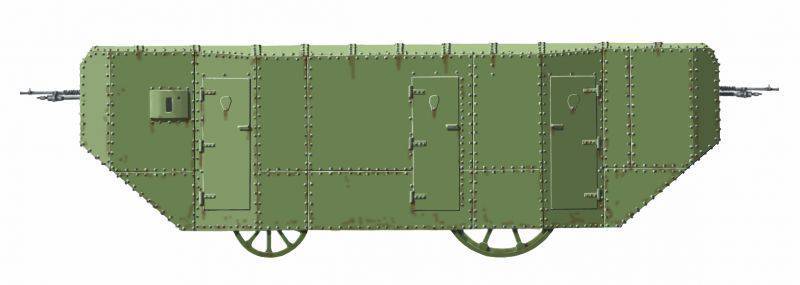
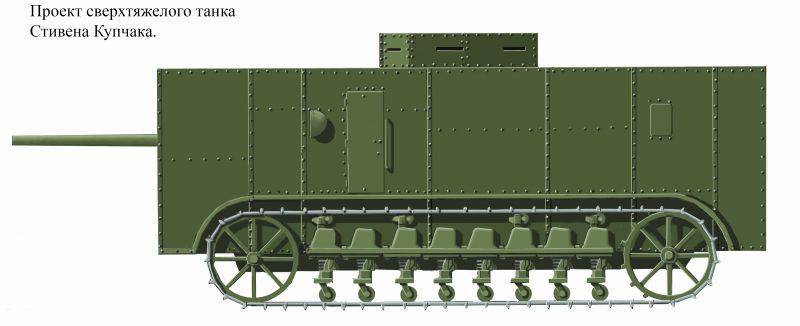
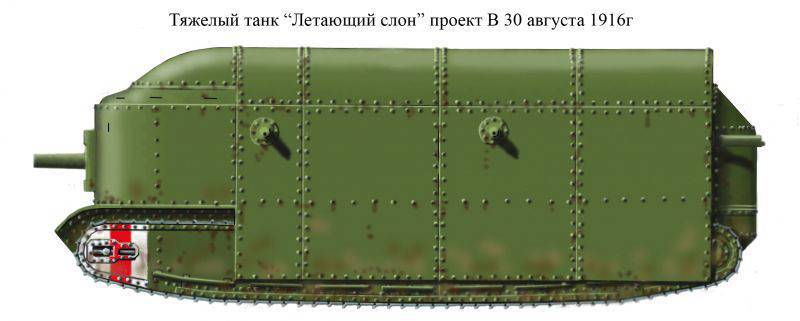
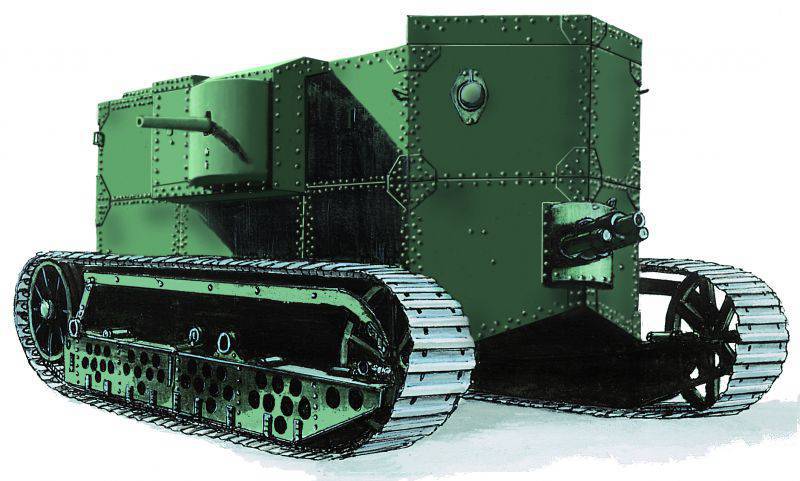
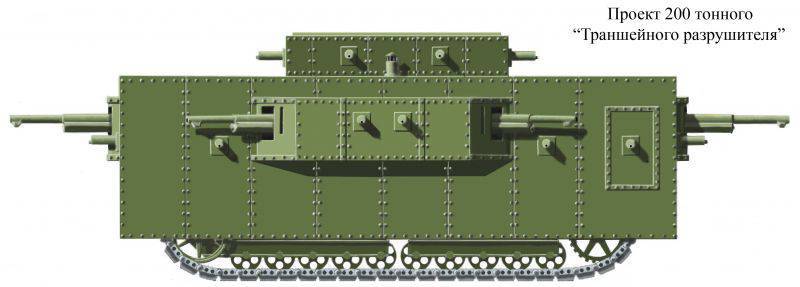
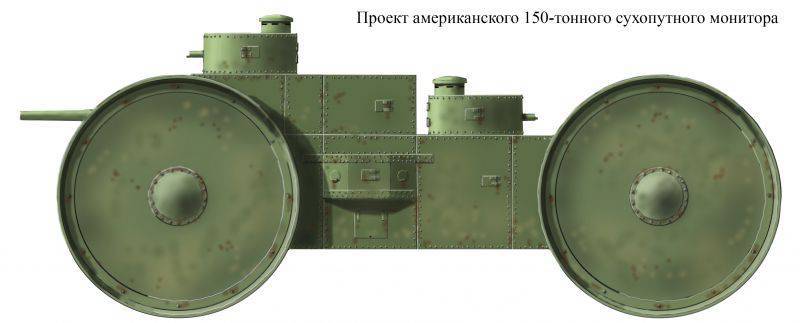
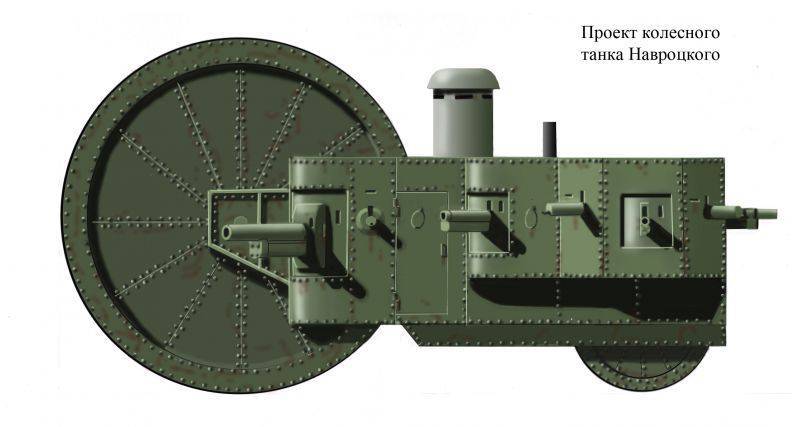
Information